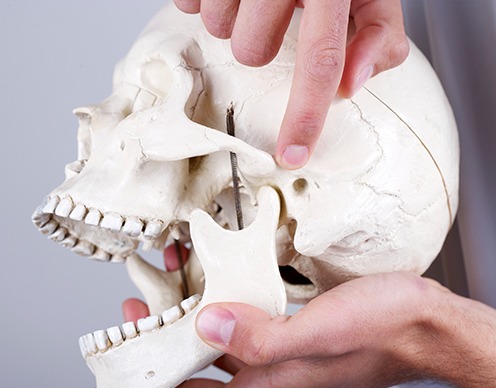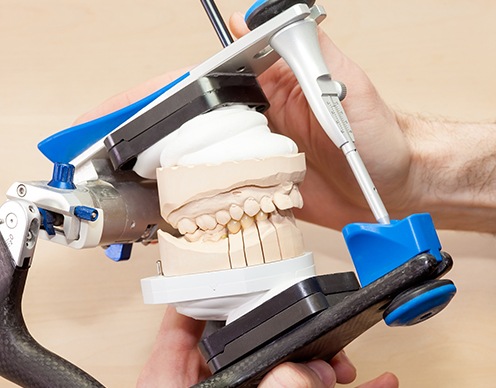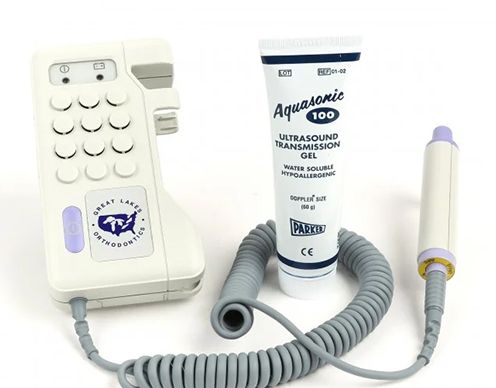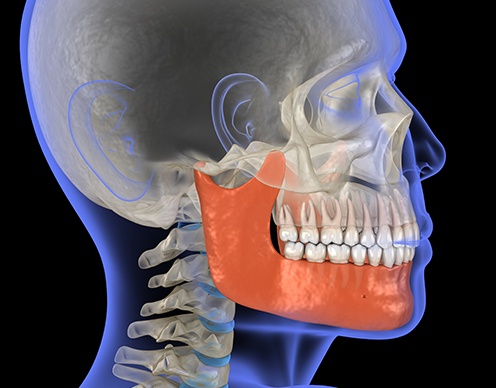TMJ/TMD Headache Relief – Randolph, NJ
Solving More
than Dental Problems
It’s a little-known fact that 70-80% of all headaches are caused by the malposition of the teeth. Many patients take pill after pill and get no relief. And what about the side-effects of all those pills? Why can’t you find headache relief? The reason is simple: you’re treating the symptoms and not the cause! Learn more about treating TMJ/TMD for head relief with our Randolph, NJ dentist and team.
Why Choose Randolph Dental Care
for TMJ/TMD Headache Relief?
-
Dentist Highly Experienced
with TMJ Therapy -
State-of-the-Art Dental
Facility and Equipment -
All Treatments Completed
in One Location
What is TMJ?

The TMJ (jaw joint) is a joint like any other in your body. Every joint in the body has a specific range of motion, e.g. bend your arm - straighten out your arm, and then flex your arm. You cannot bend your arm backwards, or sideways. The joint would have to be forced into that position (as in cases of severe trauma due to bodily injury due to severe trauma) bringing with it severe pain. The TMJ is no different. If all of your teeth are in perfect alignment (which is rare), when you clench your teeth, your joint will be in the correct position. If your teeth are misaligned, clenching will force your joint into an unnatural position.
Equilibration

Most patients have never heard of this service, but we feel this is one of the most valuable services we perform. Oftentimes, the teeth on the upper and lower jaw do not meet correctly and cause shifting of the jaw on closure. If this occurs for a period of time, it can cause the jaw joint to permanently shift out of place, teeth to break or loosen, headaches, migraines, along with face and neck pain – just to name a few of the ailments that can arise from what is known as malocclusion.
By simply reshaping the surface of the teeth (often times less than a millimeter), we can significantly and profoundly improve the quality of a patient’s life that had been formerly riddled with pain and discomfort. Many times, patients don’t even realize they have a problem until we eliminate it.
Doppler Auscultation

In order to help us to make a precise, accurate diagnosis of your jaw joint, Drs. Glen and Zachary Goldstein use a device called a doppler. With this instrument, we're able to listen to sounds in your jaw joint, similar to a common ultrasound. Many patients who come to us never realize that they had a jaw problem, to begin with.
TMJ Therapy in Dentistry

This subject is one of the least understood concepts in the dental community. There are two reasons for this. 1) In our dental training, there is little to no instruction in this area of study. Even if there was, it is difficult to fully understand this subject without hands-on experience. 2) In order to be properly trained and subsequently skilled in this facet of dentistry, you must spend a great deal of time away from your dental office, and unfortunately your family as well. Sadly, when it comes to this aspect of dentistry, most dental professionals are not interested, or dedicated enough to be willing to devote the necessary time and expense that goes into the rigorous training.
The Goldstein Standard

Dr. Glen Goldstein has had the good fortune to study under two of the leaders in this field - Dr. Peter Dawson and Dr. Mark Piper. It is through their teachings and application that he has transformed his dental office from treating a tooth, to treating an entire person and their entire biomechanical system. Since incorporating this into the dental office almost 20 years ago, he has helped hundreds of patients with problems ranging from bad bites up through and including migraine headaches. Our dental office works very closely with ENTs, neurologists, practitioners in pain management, and chiropractors in solving these complex problems. If you have any of the following symptoms, you may have a bite, or joint problem:
- Worn teeth
- Sensitive teeth
- Painful teeth
- Cracked teeth
- Sensitivity to hot, cold, and sweets
- A receding gum line(s)
- Painful muscles throughout the head and/or neck
- Frequent headaches
- Migraines
- Clicking, popping, or crunching sounds when you open or close your mouth
- Inability to close, or widely open the mouth
- Earaches
- Ringing in the ears
- A diagnosis of Fibromyalgia, RSD, or CRPS
What is the
Next Step?

"I cannot speak more highly of Dr Goldstein and his staff. I went to Dr Goldstein for my TMJ disorder after consulting with three other “specialists”. Dr Goldstein was the only one who really seemed to understand the problem and take the time and effort to figure out the root cause. He was always very transparent about my treatment plan (and how long it would take) and was willing to answer any questions I had. I am very grateful for everything he did to help me treat my condition. Samantha at the front desk was simply wonderful as well, always helping with my insurance issues and appointments. I literally got my life back again through his care."









